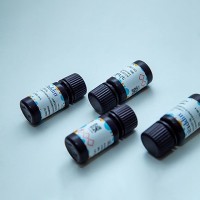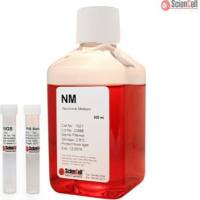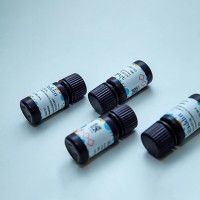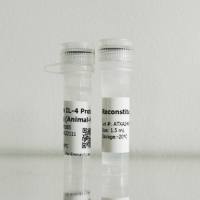Cell子刊:科学家新研发一种技术快速将iPSC转化成为老化神经细胞
互联网
- 相关专题
斯隆 - 凯特林癌症研究所研发一种新技术,可以将iPSC(诱导多功能干细胞 )转化成为老化的神经细胞。这一技术可以用来建立帕金森症模型。相关文章发表于2013年12月05日的《Cell Stem Cell》杂志上。
<center> <br /> Cell子刊:科学家新研发一种技术快速将iPSC转化成为老化神经细胞</center>早老蛋白progerin是早老症中的关键蛋白 ,研究人员用progerin处理iPSC衍生出的细胞,使这些细胞表现出一系列老年病的特征。这一简单策略为预防和治疗多种老年病开辟了新的途径。
“在此之前,iPSC衍生细胞通常需要培养很长时间才能用来模拟老年病,”文章的资深作者,Sloan-Kettering 癌症研究所的Lorenz Studer说。“现在,我们用progerin诱导细胞老化 ,将这一过程大大缩短,只需要几天或数周时间。随着现代社会老龄化的日益加重,老年病给社会带来了很大的负担,而我们的方法能够大大简化许多老年病的研究。”
iPS技术可以用来在体外模拟特定患者的疾病,人们可以将患者的皮肤细胞,重编程为类似胚胎干细胞 的iPSC,然后诱导这些细胞转化为与疾病有关的细胞类型,例如神经元或血细胞。然而,iPSC衍生的细胞并不成熟,往往需要培养数月才具备功能,这一点类似于人类胚胎的缓慢发育。因此,iPSC衍生细胞对于模拟老年病往往过于年轻。
为了克服这一难题,Studer及其团队将iPSC衍生的皮肤细胞 和神经元,暴露在早老蛋白progerin中。研究显示,只需要短时间的progerin处理,细胞就能表现出与年龄增长相关的特征,这些特征常出现在老年人的细胞中。
研究人员将帕金森患者的皮肤细胞重编程 为iPSC,并将这些干细胞转化成为疾病相关的神经元。他们发现,用progerin处理这些神经元之后,细胞表现出了帕金森症的一些特征,包括神经元退化、细胞死亡以及线粒体缺陷等。
“这一技术让我们能够分析多种疾病相关的表型,此前的帕金森体外研究还无法模拟这些疾病现象,”文章的第一作者Justine Miller说。“我们希望这一方法可以帮助人们研究老年病出现的原因。此外,这一方法也可以催生更具靶向性的筛选平台,帮助人们开发新药对老年病进行治疗和预防。”
原文摘要:
Human iPSC-Based Modeling of Late-Onset Disease via Progerin-Induced Aging
Justine D. Miller,Yosif M. Ganat,Sarah Kishinevsky,Robert L. Bowman,Becky Liu,Edmund Y. Tu,Pankaj K. Mandal,Elsa Vera,Jae-won Shim,Sonja Kriks,Tony Taldone,Noemi Fusaki,Mark J. Tomishima,Dimitri Krainc,Teresa A. Milner,Derrick J. Rossi,Lorenz Studer
Reprogramming somatic cells to induced pluripotent stem cells (iPSCs) resets their identity back to an embryonic age and, thus, presents a significant hurdle for modeling late-onset disorders. In this study, we describe a strategy for inducing aging-related features in human iPSC-derived lineages and apply it to the modeling of Parkinson’s disease (PD). Our approach involves expression of progerin, a truncated form of lamin A associated with premature aging. We found that expression of progerin in iPSC-derived fibroblasts and neurons induces multiple aging-related markers and characteristics, including dopamine-specific phenotypes such as neuromelanin accumulation. Induced aging in PD iPSC-derived dopamine neurons revealed disease phenotypes that require both aging and genetic susceptibility, such as pronounced dendrite degeneration, progressive loss of tyrosine hydroxylase (TH) expression, and enlarged mitochondria or Lewy-body-precursor inclusions. Thus, our study suggests that progerin-induced aging can be used to reveal late-onset age-related disease features in hiPSC-based disease models.







